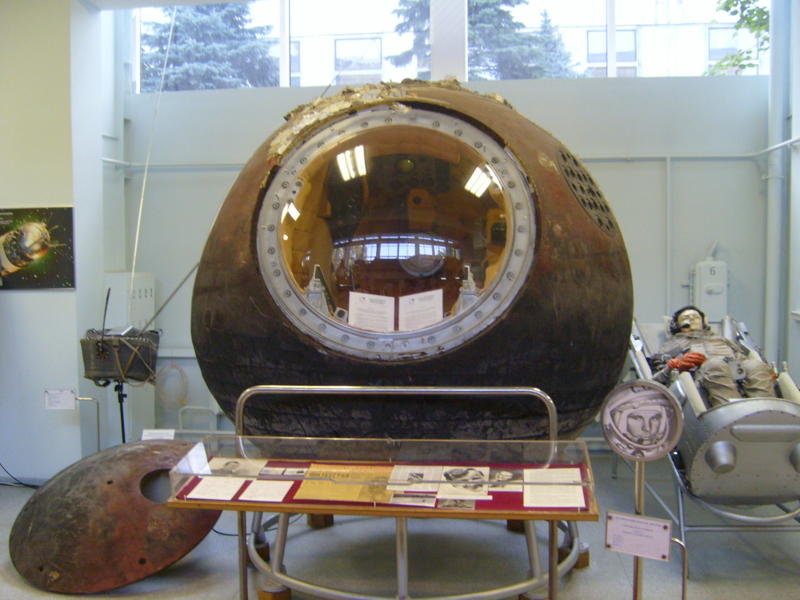The bust of Soviet cosmonaut Yuri Gagarin, the first man in space who made his pioneering flight in 1961, has been unveiled in the Oeiras municipality in the Lisbon metropolitan area, the Russian embassy in Portugal told Sputnik.
“We will always remember the names of the first daredevils who made the first flight into space and the first round the world trip – Yuri Gagarin and Ferdinand Magellan. Without remembering the past, we will not be able to move towards the future.
And the opening of the monument to Yuri Gagarin here, on the land of great sailors, is a step in the right direction, towards friendship and cooperation,” Russian Ambassador to Portugal Mikhail Kamynin said.
The Gagarin bust was installed in the Taguspark Urban Art Museum in Oeiras.
On April 12, 1961, Gagarin pronounced his famous “Poyekhali!” (Let’s Go!) as the Vostok spacecraft lifted off the ground, taking the first person ever to space. The anniversary of the first Soviet cosmonaut’s flight is celebrated every year in Russia as Cosmonautics Day on April 12, and as International Day of Human Space Flight in the rest of the world.
The UN General Assembly declared April 12, the day of Gagarin’s space flight, as the International Day of Human Space Flight in 2011.
Yuri Gagarin Says ‘Poyekhali’
Legendary Soviet cosmonaut Yuri Gagarin’s pioneering space flight 60 years ago was life-changing for every nation on the planet, and demonstrated Earth’s gravity need not prevent humanity from exploring the entire universe, US-based Space Foundation CEO Tom Zelibor had said in April.
On April 12, 1961, Gagarin pronounced his famous “Poyekhali!” (Let’s Go!) as the Vostok spacecraft lifted off the ground, taking the first person ever to space. After orbiting the Earth once, the re-entry module landed on the territory of what was then the Soviet Union.
“Gagarin’s flight, like Alan Shepard’s a month later was life-changing for not just the Soviet Union and the US but for everyone on this planet,” Zelibor said. “It showed us all, we do not need to be bound by Earth’s gravity because we have an entire universe to explore.”
April 12th, he added, “is the day that everything changes for humanity.”
“One of us from the entire human race takes that first journey into space and after that, we all begin to follow. It’s part of the reason we hold so many explorers in such high esteem,” Zelibor said. “They’ve done something that no one had ever done before, and that spark they offer is all it takes to give someone else the initiative and courage to give it a go and take their bold step forward next.”
Zelibor went on to say that Gagarin’s flight is emblematic of the human experience to explore and take risks by going into the unknown.
“What also makes his flight so valuable is the fact we have pictures and footage that captured it as it happened,” he added. “No other explorer before him, ever had their venture chronicled on film but having that visual record means more of us could share in the experience.”
Zelibor added that those images were not just visual proof, but they shared wonder and imagination of what is possible for people to achieve.
“Which is why even today, we still crave the pictures, footage and visuals that come with spaceflight,” he noted.
The fact Russia, the US, China and others have spacecraft distributed throughout the system, bearing their respective flags, tells the universe: “We’re here and we’re going to explore wherever it takes us.”
“April 12th, 1961 is the day it all started for the human race and Yuri Gagarin was the person who started that for all of us,” he said.
Zelibor underscored that that represents a powerful testament of how the global space ecosystem can work together to tackle bold missions in space but also address big problems on Earth.

“While Gagarin’s venture into space may be the human start of space exploration, it is also the start of how space changes humanity for the bettering of life here on Earth,” he said. “When that happens, it benefits everyone and its Space Foundation’s mission to share those stories, programs and rewards.”
On April 7, 2011, the UN General Assembly proclaimed April 12 as the International Day of Human Space Flight on the occasion of the 50th anniversary of Gagarin’s first space flight. The resolution was co-authored by more than 60 UN member states.
“Today Space Foundation works with educators from around the globe. In our Teacher Liaison Program we have hundreds of elite educators from 14 different countries participating – all with one goal – making a better future for everyone,” he said.
“We don’t have one from Russia yet, but that’s something we want to have soon. That’s progress by any measure and it all starts with that first flight.”

Zelibor noted that for the past decade, Space Foundation has hosted an annual “Yuri’s Night,” to celebrate Gagarin’s flight, and it usually aligned with the annual Space Symposium. Because of the current pandemic, this year on Saturday, April 17th, the Foundation will host a virtual gathering that will allow families to participate in an interactive event dubbed “choose your own adventure”.
“Normally, we would be gathering many of our Symposium attendees among the various exhibits and displays at our Discovery Center for our Yuri’s Night celebration but with the ongoing pandemic, we’ve gone with an online gathering,” he explained. “It’s certainly not what we hoped it would be, but this platform also allows us to reach even more people and doing the interactive adventure with Astrid allows the experience to still deliver a personal feel.”
Zelibor noted that participants will be able to help the pioneering astronaut, Astrid, who was inspired by Yuri Gagarin and every space pioneer that has followed, as Astrid seeks to be the first human on Mars.
“Astrid runs into some trouble along the way and it’s up to participants to help her successfully make it to Mars,” he said. “We saw this year’s gathering as an opportunity to not only educate and inspire children and their families about Gagarin’s flight but also take part in mission decisions that will help Astrid get to her intended destination.”
Zelibor added that Space Foundation has used Yuri’s Night as a fundraiser for the multiple education programs, teachers, students and families worldwide. This year’s program, he said, is also about helping young people see their place in the global space ecosystem.
“They all don’t have to be astronauts like our character Astrid, but there are opportunities for them to be flight directors, construction leaders, doctors, climate scientists, geologists, nutritionists and so much more,” he continued. “Today’s generation of children will have more space happenings in their lives than any before it and if Space Foundation and events like Yuri’s Night can help them see that future, we’re going to do it.”
“It is also a moment to give pause and reflect how that first flight changed the world and every person on it,” Zelibor stressed. “Nothing was ever the same after that flight and every bold step we take since Gagarin’s flight proves there’s nothing we cannot do without know-how, dedication and courage. It’s a tremendous legacy.”




